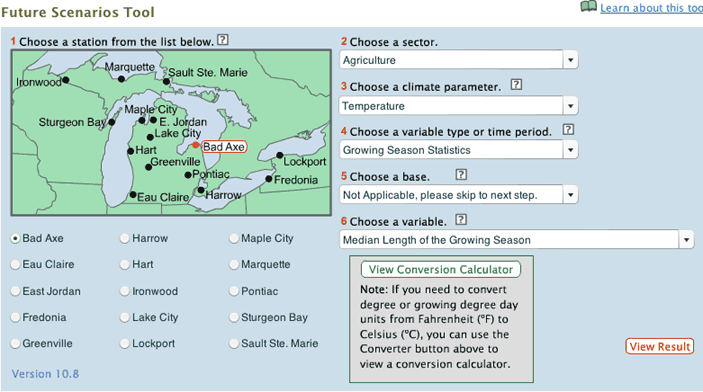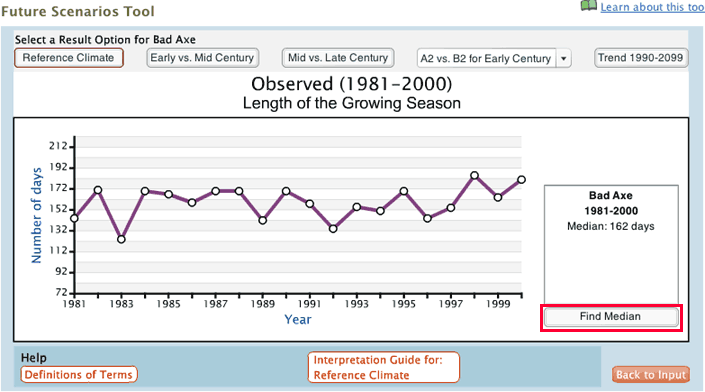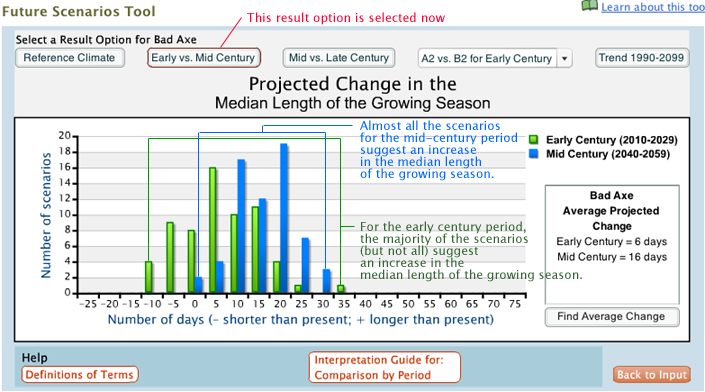Future Scenarios Tool User Case 2

Photo by Keith Weller, USDA
How might changes in the length of the growing season affect the feasibility of double cropping?
The length of the growing season has an impact on the type of crops that can be planted at a location and the number of plantings per season. Soy beans are one crop for which double cropping may be possible under warmer conditions.
One of the climate parameters included in the Future Scenarios Tool is the length of the growing season, defined as the number of days between the last spring freeze and first fall freeze. To view this parameter, from the input page first choose a station (Bad Axe is shown in this example), and then choose “Agriculture”, “Temperature”, “Growing Season Statistics”, and “Median Length of the Growing Season”. (See Screenshot 1 below)
Screenshot 1

Now click on “View Result”. The graph that is displayed (Screenshot 2) shows the year-to-year variation in the growing season length for the historical period 1981-2000. The median value of 162 days is found by clicking on the “Find Median” button.
Screenshot 2

You can view the results by early, mid and late century period or for the entire 110-year time slice. For this example, the scenarios for the early (2010-2029) and mid (2040-2059) century periods are displayed below (Screenshot 3). This type of display is called a histogram. The horizontal axis gives the projected change in the median length of the growing seasons in terms of days. The projected change has been broken into “bins”, with the midpoint of each bin printed along the axis. For example, “0” is the midpoint for the bin ranging from -2.5 to +2.5 days. The length of each bar represents the number of scenarios for that bin. In other words, for the early century period (green bars), four scenarios projected a change of -12.5 to -7.5 days in the median length of the growing season but 11 scenarios projected a change of +12.5 to +17.5 days in the median value. The spread of the bars provides an indication of the uncertainty surrounding the scenarios. For the early century period, the majority of the scenarios (but not all) suggest an increase in the median length of the growing season. When averaged across all the scenarios, a six-day increase in the median value is projected. On the other hand, almost all the scenarios for the mid-century period suggest an increase in the median length of the growing season. The average projected change for the mid-century period is 16 days. The scenarios suggest that the growing season will increase and that the potential for double cropping will also increase.
Screenshot 3
